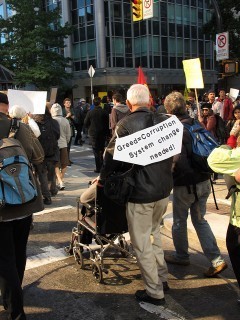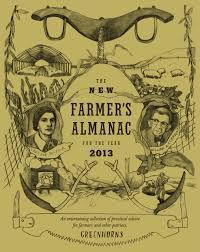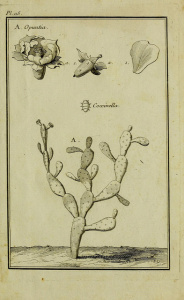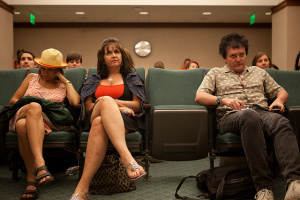Stuart Jeanne Bramhall's Blog: The Most Revolutionary Act , page 1377
November 30, 2013
Sign Petition to INCREASE Social Security

New bills by Senator Mark Begich (D-Alaska) and Tom Harkin (D-Iowa) seek to let the steam out of the phony debate over Social Security’s non-existent fiscal crisis by removing the $113,700 cap on earnings that are taxable for Social Security purposes.
Under Begich’s and Harkin’s proposals, there would cease to be a $113,700 maximum on the earnings taxed for Social Security purposes. Instead, all US workers would be charged 12.4% (with employer and employee each paying 6.2%) on their full earnings. Eliminating this $113,700 cap is clearly fairer than our current system.
There is no reason CEOs making millions of dollars a year shouldn’t pay 12.4% on their full income, just like the rest of us. At the same time, the additional revenue is more than enough to keep the Social Security Trust Fund solvent into the next century. Both proposals also significantly increase cost-of-living adjustments to accurately reflect the higher cost inflation seniors face compared to the general public.
It has become virtually impossible for most Americans to find their way through the smoke and mirrors surrounding recent proposals to balance the federal budget by slashing Social Security benefits. The entire Social Security debate is an exercise in deception. Nothing exemplifies more clearly that most lawmakers, irrespective of political party, see their primary purpose as deceiving and manipulating the American public.
What we’re not being told is that most Washington lawmakers (with a few notable exceptions) are in the pocket of powerful Wall Street banks who seek to privatize Social Security for its profit potential. As anyone with small business or payroll experience can tell you, cutting Social Security benefits can’t possibly reduce the federal deficit because they are paid from a totally separate, self-funded Social Security Trust Fund. Moreover, a close look at the Fund’s balance sheet reveals that it’s on track to remain solvent until 2033 – even if nothing is done.
Tell the Senate to support the Harkin and Begich proposals to scrap the cap on Social Security payroll tax. Sign the petition.
photo credit: Fifth World Art via photopin cc


November 28, 2013
A Novel About Climate Change
Flight Behavior
By Barbara Kingsolver
Book Review
Flight Behavior is actually about culture clash and the psychology of belief systems. In it, Kingsolver examines the manner in which social conditioning affects peoples’ reaction to a highly abstract concept such as climate change.
The book concerns a navigational error in which the entire North American population of Monarch butterflies mistakenly migrates to a mountain in Appalachia to hibernate. Tension immediately arises when the climate scientist sent to investigate is a black man from the Caribbean and the family that owns the property seeks to log it to dig their way out of debt. The rest of the community, with a world view based on conservative talk radio and the wisdom of their fundamentalist minister, is deeply skeptical of all outsiders and intellectuals – especially those who suggest anything is more important than putting a roof over their heads and food on the table. The tension is resolved somewhat when the family discovers eco-tourism and starts charging visitors to view the spectacular congregation of butterflies.
Kingsolver carefully interweaves an elegant subplot about a decision by the main character to accept paid work with the climate scientist and his student assistants. The move awakens an intellectual side of Dellarobia that had gotten lost in the overwhelming drudgery of caretaking her husband and three young children.
The author wisely refrains from taking a stand on the scientific merits of the climate change debate. She merely observes the reaction in a small Appalachian community when changing weather patterns hit them in a way they can’t ignore. Kingsolver is a master of character development and keeps you turning pages to see what her characters will get up to next.


November 26, 2013
The New Farmer’s Almanac
The New Farmer’s Almanac for the Year 2013
Published by the Greenhorns
Book Review
The Greenhorns, which publishes the 2013 New Farmer’s Almanac, is a national organization founded in 2007 to support thousands of young farmer’s who are leaving US cities to start small scale organic farms. An economically precarious occupation, farming is subject to numerous forces over which the farmer has no control. Among others, these include land speculation, unfavorable weather, and constant downward pressure on crop prices. The New Farmer’s Almanac is modeled on the annual Old Farmer’s Almanac, which dates back to revolutionary times. However the new almanac differs in its focus on the myriad of networks and resources which have grown up around the food localization movement. Food localization is the name given to a growing international initiative to improve improve health and reduce environmental harm by switching from imported and chemically-laden processed foods to fresh, locally grown organic products.
The Old Farmer’s Almanac
Historically the purpose of almanacs has been to provide farmers with working information about the earth’s natural cycles and the art and business of agriculture. The Old Farmer’s Almanac dates back to Ben Franklin’s Poor Richard’s Almanac, an annual publication he launched in 1732 under the name Richard Saunders. Franklin’s wasn’t the first and it clearly drew on earlier English and North American almanacs. In pioneer days, the farmer’s almanac was the only reading material in the household other than the Bibl and was expected to provide a year’s worth of entertainment.
Like the Old Farmer’s Almanac, the New Farmer’s Almanac offers long range weather forecasts, full moon dates, sunrise and sunset times, best planting dates, crop advice, tides tables, riddles, games, recipes, songs, and folk wisdom. It also includes intriguing reprints of essays, proverbs, and classified ads from historic almanacs
The Farm Utopia Movement
I found the introduction, which describes America’s farm utopia movement, the most interesting secion. Throughout US history, Idealist groups have left the city to set up small scale rural farms in their desire to escape the evils of mercantilist society. Examples include the Shakers in 1780, the Mormon start-up in 1817, the Transcendentalists at Fruitlands in 1840, the Free Love Christian Movement in Oneida in 1858, and Chautauqua, the righteous rural education scheme, in 1874. The sixties also saw a large back-to-the land movement as part of the hippy subculture.
The New Farmer’s Almanac also contains numerous informational articles on traditional farming skills, such as animal husbandry (cows, sheep, horses, and fowl), pasture design, beekeeping, worm farming, invasive plants, frost management, fermented foods, cheese making, and preparing oil infusions, tinctures, and salves from herbs. One essay is a discussion of the moon planting schedules practiced in Maori and other indigenous societies. These were popularized by Rudolf Steiner (founder of the Waldorf school movement) in the 1920s. The inclusion of full moon dates in every Old Farmer’s Almanac suggests that early New World farmers also planted according to phases of the moon. The modern biointensive farming movement continues to employ moon planting schedules.
Food Policy Councils
The remainder of the book discusses the history of historic farmer activism, through the 20th century Grange and populist movements, and the modern young farmer and food localization movement. I was most impressed by the essay on the Food Policy Council Movement. Amazingly, as of May 2012 there were 193 Food Policy Councils, involving over45 communities and 3,500 participants. Their purpose: to provide communities a say in where there food comes from and how it’s produced. There are also features on the history of the organic movement (which started back in 1911), as well as reading lists and links to material on apprenticeships and agriculture education, business and finance issues, legal advice, sustainable farming techniques, and Community Supported Agriculture schemes (CSAs). Forming a CSA enables a local community to support local small-scale farmers with upfront costs.
If We Die, You Go With Us

photo credit: jelene via photopin cc
Unlike the Old Farmer’s Almanac, the New Farmer’s Almanac is clearly aimed at a broader audience than farmers. Given growing public concern with food security issues such as chemical and bacterial contamination and the endangered bee population, it’s an engaging read for people who produce or consume food. In other words, all of us.


November 21, 2013
The Power of Community
The Power of Community
Produced by The Community Solution (2006)
Film Review
The Power of Community is a documentary about Cuba’s “Special Period” in the early 1990s, following the political and economic collapse of the Soviet Union. The break-up of the USSR resulted in the virtual collapse of the Cuban’s economy owing to Castro’s dependence on Soviet oil. Not only did Cuba lose 80% of their oil imports, they also lost most of their food import when Bush senior enacted a trade embargo that penalized countries that raded with Cuba.
In contrast to the response of the industrialized world to the 2008 global meltdown, Cuba didn’t respond to the economic crisis by enacting austerity cuts. Instead they added free food to existing social services, which include free health care and and tertiary education. By implementing food rationing to prevent hoarding and speculation, successfully provided the entire population with 80% of their monthly food requirement.
Important Lessons for the Industrialized World
The filmmakers believe Cuba’s resilience in weathering the collapse of their fossil fuel economy offers important lessons for the developed world as they confront dwindling fossil fuel resources. The Power of Community begins by explaining Peak Oil and oil engineer M.K. Hubbert’s prediction that oil, gas, and coal resources would cease to be abundant and plentiful in the 21st century. It goes on to describe the effect of the loss of cheap energy and food during the Special Period.Between 1992-94, the average Cuban lost 20 pounds and pregnant women and children under five began showing signs of malnutrition.
The most immediate response was from the Cuban people themselves, as city dwellers reclaimed every available patch of vacant land. The government, in turn, began offering rent and tax-free tenancy on government land to individuals and cooperatives willing to produce food. To compensate for the loss tractors and fossil-fuel based fertilizers, pesticides, and herbicides, Castro government also engaged Australian permaculture specialists to organize extensive country-wide training in organic farming techniques.
Transformation on a Massive Scale
Recovery of essential soil microorganisms killed by industrial pesticides takes approximately 3-5 years. During this transition period, the entire Cuban society underwent transformation, as cars, busses, and tractors were replaced with a million Chinese bicycles, horses, mules, oxen and human laborers. As farmers’ incomes rose, there was also a major population shift from cities to the countryside. A side benefit was the drop in diabetes and cardiovascular disease as Cubans began exercising more and increased their dietary intake of fresh vegetables.
To maintain their electrical grid, Cuba revamped their power plants to burn their low quality domestic crude oil and converted their sugar refineries to biomass power plants. In the 5% of the country that remains off grid, wind energy, hydropower, and solar photo voltaic cells supply power to schools, clinics and hospitals.
Intangible Benefits of Cuba’s Organic Revolution
The Cubans interviewed in The Power of Community view the transition as enormously positive. The close cooperation required to meet basic survival needs has reinvigorated old community ties that were destroyed by industrialization. They are also proud of the new political independence food and energy self-sufficiency has brought.
photo credit: cheeses via photopin cc


November 19, 2013
The Fallacy of Unlimited Growth
An increasing number of environmentalists and economists make the argument that unlimited economic growth is impossible on a finite planet. More importantly, there are clear links between rampant growth and worsening human health and well-being (through toxic pollution and extreme weather events).
In the following interview, Andrew Simms, author of Cancel the Apocalypse, makes an extremely articulate case for transitioning to a steady state economy. The main argument for a growth-based economy is to lift poor people out of poverty. However, as Simms points out, exponential economic growth only worsens income inequality.
I find it intriguing that David Cameron called for limits to growth while in opposition. Since being elected Britain’s prime minister, he has totally reversed himself.
photo credit: Leader Nancy Pelosi via photopin cc


November 17, 2013
Lee Harvey Oswald: Career CIA Operative
JFK: The Second Plot
Matthew Smith (1992)
Book Review
Lee Harvey Oswald worked for the CIA (and FBI and Army and most likely Naval Intelligence) from the late fifties when the CIA recruited him from the Marine Corps until his murder on November 24, 1963 by Dallas nightclub owner Jack Ruby. A clear appreciation of Lee Harvey Oswald’s role as an intelligence operative is key to understanding the JFK assassination conspiracy and cover-up. Although more than 20 years old, in my opinion Matthew Smith’s JFK: The Second Plot offers the most comprehensive account of Oswald’s CIA career. The first account of Lee Harvey Oswald’s CIA connections appeared in a 1968 book originally published by French intelligence entitled Farewell America. French president Charles DeGaulle had a keen interest in identifying the conspirators behind Kennedy’s assassination, as the same group had also made three assassination attempts against DeGaulle. Farewell America reveals how the CIA recruited Oswald when he was stationed at Atsugi Marine Air Base in Japan and sent him to the Soviet Union. These historical details were corroborated by testimony a former CIA officer provided the House Committee on Assassinations in 1978.
The Soviets, recognizing Oswald as a likely double agent, never fully trusted him, and in 1961 the CIA returned him to the US. According to government archives, his handlers went on to give him assignments intended to create a kooky leftist alter ego, which would later be used to frame him for Kennedy’s murder. Given that Oswald had foreknowledge of Kennedy’s assassination, the obvious question is why he allowed himself to be set up. The answer Smith offers seems totally plausible: Oswald believed the CIA was returning him to the Soviet Union (via Cuba) to become a double agent. His handlers, in turn, intended to use his flight to Cuba to blame the President’s assassination on Fidel Castro.
Oswald’s Visit to Red Bird Airport
Smith first got the idea for his book after obtaining FBI documents under the Freedom of Information Act revealing that Oswald, together with two other federal agents, paid a visit to the American Aviation Company (AAC) at Red Bird Airport trying to charter an aircraft for November 22, 1963. Smith subsequently interviewed Wayne January, the AAC employee they dealt with, and discovered the FBI had falsified the date. The FBI gives the date of their encounter as July, 1963, while it was actually November 20, only two days before the assassination.
Smith also answers puzzling questions about Officer J.D. Tippitt’s role in the assassination conspiracy. Smith believes that an ex-CIA friend named Roscoe White asked Tippitt to transport Oswald to the Red Bird Airport to catch a charter flight to Cuba. When they rendezvoused, Tippitt became suspicious after hearing Oswald’s description broadcast over the police radio. When he got out to question him, a man matching White’s description rushed out of the bushes and shot Tippitt. Following Tippitt’s murder, the plan to spirit Oswald off to Cuba had to be abandoned.
The Main-Tier Plot
Smith organizes his book into two halves. Book One is called “The Main-Tier Plot,” involving the assemblage of a group of snipers to ambush President Kennedy as his motorcade traveled through Dallas. Book Two is devoted to “The Second Plot,” a scheme to enable the true shooters and co-conspirators to escape prosecution by shifting the blame to a kooky leftist Castro-sympathizer.
Smith’s expose of the main-tier plot begins with official Warren Commission (WC) version of the assassination. He devotes an chapter to irregularities in gathering and recording WC testimony that would never be allowed in a court of law. Many of the witnesses reported seeing more than one gunmen and complained bitterly about their evidence being omitted or misreported. Smith is particularly critical of the WC for failing to investigate Officer Tippit’s background or obtain ballistic evidence linking Oswald’s handgun to his murder.
Smith also summarizes the detailed physical evidence pointing to the presence of three or four shooters in Dealey Plaza. He goes on to discuss the intelligence connections of a handful of suspects arrested in the Dal Tex building and elsewhere in Dealey Plaza. All were released after President Lyndon Johnson ordered the Dallas police to discontinue their investigation. Smith devotes an entire chapter to the photographic evidence, including the amateur film made by businessman Abraham Zapruder, which was altered to make the fatal shot appear to come came from the Book Depository behind the motorcade. Finally he discusses the acoustic recordings which led the House Assassinations Committee to make the determination that more than one shooter was involved in Kennedy’s murder.
The Second Plot
The second half of the book offers an in-depth portrait of Oswald’s early history and personality. It details his posting to the Atsugi Marine Air Base in Japan, where he held a “secret” level security clearance, and assisted in monitoring overflights of the Top Secret U2 Spy plane. Smith goes on to describe Oswald’s activities in the Soviet Union in exhaustive detail, as well as the assignments he was given on his return to the US. In one of his first jobs, he processed photos of a Soviet military facility, which again required a security clearance. Other assignments involved infiltrating leftist and pro-Castro groups as an informant. The fabrication of Oswald’s unstable loner persona was facilitated by an Oswald double, a second agent who created major public disturbances while posing as Oswald.
Smith believes that at the time of his arrest, Oswald had been given a new assignment – to attempt to return to the Soviet Union via Cuba. Strong evidence suggests there were plans to airlift him to Cuba the afternoon of November 22, 1963. The plans were suddenly disrupted when Officer J.D. Tippitt was shot and killed. Tippitt’s murder forced the plan to spirit Oswald away to Cuba to be abandoned. His subsequent arrest necessitated his murder by Jack Ruby, another minor co-conspirator. Allowing Oswald’s intelligence connections to come out at trial would have seriously endangered high level officials in the Kennedy administration who participated in the conspiracy.
The Conspirators Had Names
The book’s final chapter “The Conspirators Had Names” is disappointing because it offers no firm conclusions about the real culprits in the JFK assassination. Although Smith refers to New Orleans District Attorney’s Jim Garrison’s unsuccessful prosecution of one of the co-conspirators, he makes no mention whatsoever of the Swiss corporation Pemindex that financed the assassination. It was Clay Shaw’s membership in Permindex that formed the basis of Garrison’s case against him. Nor does it mention the shadowy Defense Industrial Security Command and the 50 or so intelligence and defense contractors with clearly established links to both the DISC and the assassination. The evidence linking Permindex and DISC to the JFK assassination is outlined most clearly in a 1970 book by William Torbitt called Nomenclature of an Assassination Cabal or Torbitt Document
Posted in honor of the 50th anniversary of the assassination of John F Kennedy.
photo credit: Lone Primate via photopin cc
Originally published in Veterans Today


November 13, 2013
The Citizen Science Movement
Interview with Sean Bonner, citizen scientist and founder of Safecast, a lay nuclear radiation monitoring group founded a week after the March 2011 earthquake and tsunami in Fukushima.
Bonner started Safecast when the Japanese government failed to disseminate adequate information about radiation levels following the Fukushima diasaster. Using mobile radiation detectors mounted to vehicles, Bonner and his volunteers produced complete radiation maps of northern Japan that forced the government to release data they were trying to cover up and alter they evacuation zones.Since then, volunteers have joined from all over the world are are helping to map radiation levels on the West Coast.
All the information on Bonner’s website (www.safecast.org), which includes detailed instructions on building radiation detectors, is totally Open Source. In the age of corruption and cover-up, Bonner feels it’s absolutely essential that citizens develop the ability to produce their own science – instead of relying on government and academic experts.
Bonner also comments on the related topic of Internet freedom and the danger of political movements relying on private companies, such as Facebook, for information sharing.
photo credit: pasukaru76 via photopin cc


November 12, 2013
Ageism: the Silent Killer

Ageism or age discrimination seriously detracts from effective medical treatment. In contrast to developing countries, where older people are respected and revered, age discrimination is pervasive in all industrialized countries. Medical ageism, which refers to age discrimination in the health care system, is reported in the medical literature of most of the developed world. As a young doctor, I was horrified by the frank malpractice my parents and maternal grandparents experienced in their later years. In all four cases, failure to make a correct diagnosis (heart disease, Parkinsonism, lung cancer, and delirium tremens) resulted in tremendous suffering and premature death. Now that I have become a senior citizen myself, I and many of my friends experience the same dismissive treatment in the doctor’s office as my family did. Physician assistant Richard Currey tackles the issue head-on in Ageism in Health Care: Time for a Change.
The One Complaint Rule
The chief frustration of most older people is GPs who only allow them to discuss one complaint per visit. After working in private practice for 25 years in the US, I fully understand how low insurance reimbursement forces doctors to squeeze six or more patients into an hour. However, limiting any patient to a single complaint strikes me as a set-up for a missed or erroneous diagnosis. One of the first things they teach you in medical school is that 99% of a patient’s diagnosis is based on their medical history and the particular cluster of symptoms they present. In my experience, a five or ten minute visit only leaves only enough time for a doctor to ask how you are feeling, check your blood pressure, and write out a lab order for cholesterol. If you complain about fatigue or pain, you will also get a lecture about these problems being a normal part of aging and needing to adjust.
Doctors’ Misconceptions About Aging
Hello? Even 40 years ago, we studied the normal aging process in medical school. Our instructors strongly emphasized that neither fatigue, nor memory problems, nor pain, nor high blood pressure were a normal part of aging. All are due to distinct medical conditions that can be diagnosed and treated. It’s true that aging makes senior citizens more vulnerable to a wide range of medical conditions. However an individual of any age with a sudden onset of fatigue or pain, be they 80, 90, or 100, has an underlying medical condition.
As gerontologist Mark Lach writes in the November 2010 AARP Bulletin, “Patients should feel that their doctor is leaving no stone unturned, that complaints are being fairly adjudicated, and that someone is really thinking about their issues. No ailment should ever be written off as an “old age” ailment. Treating patients based on their age means you can miss very significant, treatable situations.” It’s a great pity Dr Lach wasn’t around when my parents and grandparents were being misdiagnosed.
Sadly, many doctors and nurses share the common misconception that memory, energy levels, and hearing naturally deteriorate with age. Aside from hearing aids, which aren’t covered by Medicare, they assume nothing can be done for elderly patients with these problems. In fact, most health care professionals tend to believe that older people are normally frail and dependent – that those who aren’t are atypical. This stereotyped thinking is part and parcel of medical ageism.
Early Effective Treatment Saves Money
Besides vastly improving seniors’ functioning and quality of life, accurate diagnosis and treatment of our medical problems also saves money. Even in the US, most elderly care is funded by the federal government, through Medicare and Medicaid. With the strain aging us baby boomers are expected to put on the medical system, early effective treatment will save taxpayers bundles that might otherwise be spent on lengthy hospitalizations and 24/7 nursing home care.
Richard Curry’s excellent 2008 article in Aging Well likens ageism to other forms of discrimination. All negative stereotypes are based on preconceptions fueled by fear. Whether we realize it or not, all of us have unconscious fears about the physical decline, loneliness, and ultimate death we all face in getting older. Such fears are constantly reinforced by a youth-obsessed media that disparages wrinkles, grey hair, and other hallmarks of a natural process known as aging.
Ageism Kills
More startling, however, is research showing that the negative self-image caused by age discrimination is closely linked to poor health outcomes. Curry cites several studies by Dr Becca Levy of the Yale University School of Public Health linking negative age-related self-perceptions with increased risk of elevated blood pressure and cardiovascular disease, hearing loss, poor memory performance, and reduced life expectancy. Levy has conducted other studies revealing that positive self-perceptions in the elderly improve memory, thinking, cognition, mood stability, overall physical function, and life span (adding 7.5 years).
Curry acknowledges that addressing pervasive in the medical system won’t be easy. It will require sweeping reforms in health policy and medical education. At bare minimum, every type of health provider who cares for elders, including physicians, nurses, physician assistants, nurse practitioners, psychologists, and social workers, as well as paramedics, firefighters, and other first responders, needs to receive more thorough education in basic geriatric issues. Something that will only happen if with federal and/or state legislation requiring it.
The Need to Organize
The only thing Curry leaves out of his article is how to make this happen. In 2008, he is naively optimistic about Congress and state legislatures passing legislation requiring mandatory geriatric issues classes for doctors, nurses, and other service providers. Obviously none of this has happened. If anything, age discrimination, not only in the doctor’s office but in employment and social service agencies is getting even worse with cost cutting and tight budgets. Further cuts to Medicare and Medicaid, especially, will leave little room for the extensive medical re-education that is required.
Clearly Curry hasn’t read Frederick Douglas or he would know that people in power are unlikely to grant any major reforms voluntarily. We elderly will only win our rights if we self-organize and demand them, just as minorities, women, and the disabled have been doing for the last fifty years. For a start, this means getting out in the street and protesting the threatened Social Security, Medicare, and Medicaid cuts for a start. We need to follow the example of the elderly Vietnam veterans who protested the closure of the National World War II Memorial during the government shutdown, elderly Greeks protesting pension cuts, and Irish seniors protesting cuts in their pensions (below).
Angry baby boomers can be a formidable force for change. As you can see from the video:
photo credit: ouno design via photopin cc
Originally published in Veterans Today


November 10, 2013
Medicinal Plants and Poison-Free Cancer Treatment
(In my last of four posts about the effectiveness of natural health care, I offer two videos.)
1. Video #1: Numen: The Healing Power of Plants by Terrence Youk and Ann Armbrech (2009).
Numen is as much about the environmental health crisis as about plant-based medicine. It stresses that herbal medicine, the primary form of medical treatment for most of human history, remains the primary form of medical intervention for most of the world’s inhabitants. The western medical model that developed in the industrialized world is a fluke. It also has major drawbacks as well as advantages. Rates of chronic illness – such as diabetes, arthritis, and autoimmune and neurodegenerative disease – a far higher in developed countries. Even as our deaths from trauma and infectious disease decline sharply.
According to the film, it’s not western medicine per se causing an increase in these chronic illnesses. The main cause is heavy exposure to a score of industrially produced chemicals. A 2005 study by the Center for Disease Control reveals that Americans carry an average of 148 toxic chemicals in their bloodstream. Even more alarming, these toxins concentrate in breast milk which, ironically, has become the most toxic baby food available.
The scientific explanation Numen offers for the effectiveness of plant-based medicine seems quite reasonable. Human beings, who share 60% of the same DNA as a banana, co-evolved with advanced plant species over millions of years.
The video can’t be embedded owing for copyright reasons. However it can be seen for free at Dr Mercola’s website
Video #2: The Cancer Report Health Wyze (2011)
The Cancer Report is really a slide show set to music (I recommend turning your volume down). It also explores the link between a dramatic increase in environmental toxins and the current cancer epidemic. Prior to the 20th century, cancer was considered a medical oddity. Much of the film traces the role of oil and chemical baron John D Rockefeller in funding medical schools in the US and Canada – provided they agreed to discard traditional holistic methods in favor of drug-based (chemical-based) treatment.
I found the section on Dr Otto Warburg, who won the 1931 Nobel Prize for Medicine, particularly enlightening. Warburg identified how and why cancer cells develop – specifically as a result of cells being deprived of oxygen. According to the video, most “alternative” cancer therapies are based on Warburg’s work, in that they try to increase cell oxygenation. In chemotherapy, in contrast, patients are given powerful poisons that often kill them rather than the cancer. Moreover chemotherapy never cures the cancer, but merely sends it into remission.
The last half of The Cancer Report catalogs the most effective alternative cancer therapies, providing a detailed description of how they were developed, how they work, and their relative success rate.
The data presented about the poor survival rates related to chemotherapy and radiation therapy are both accurate and concerning. Five years ago, a close friend opted for a grueling course of chemotherapy that offered zero chance of remission and a 33% chance of extending her life for six months. In her shoes, I definitely would have opted for one of the alternative treatments outlined in the film.
Caveat: There are a number of claims made in the video that can’t be substantiated – for example that mammograms cause breast cancer. It’s true that any radiation exposure increases cancer risk and that mammograms don’t reduce breast cancer deaths (see How Mammograms Don’t Save Lives). The fact remains medical science still has no way of linking a specific cancer to a specific environmental exposure.
photo credit: BioDivLibrary via photopin cc


November 8, 2013
Mainstreaming Natural Health Care
(This is the 3rd of four posts on the effectiveness of “natural” or “alternative” health care.)
Third Party Coverage
Presently Germany, which has publicly guaranteed health care for all its citizens, is the only country to offer “natural” health care on a par with western medicine. However even in the US, where most health care funding is private, an increasing number of insurance companies offer coverage for “natural” or “alternative” health care. There is usually a requirement these services be offered in conjunction with traditional or “allopathic” care. The jargon used for these mixed mainstream-alternative health models is “complementary” or “integrative” medicine. Most insurance companies require that complementary and alternative medicine (CAM) providers be represented by a professional body with a formal accreditation process. There is also an expectation 1) that the accreditation body will establish clear treatment standards and 2) that all funding will be evidence and outcome-based. In other words, CAM providers must demonstrate a treatment actually works to be eligible for funding.
Some analysts are projecting that insurance coverage for natural health care will be even easier to access under Obamacare – at least for patients who can afford the higher premiums of silver, gold, and platinum plans. The uninsured and patients locked into Medicaid or bare bones bronze plans will be out of luck.
Natural Health Databases
The requirement for natural health services to be “evidence based” has led to the creation of a number of natural health research databases. Three of the most popular are the Mayo Clinic Alternative Medicine database, the NIH Complementary and Alternative Medicine database, and the Cochrane Complementary Medicine database.
The Mayo Clinic is a world famous “mainstream” medical center in Minnesota. Their database is by far the most comprehensive and user-friendly. The following statement on their home page summarises their philosophy:
“Exactly what’s considered complementary and alternative changes constantly as treatments undergo testing and move into the mainstream.”
The site provides up-to-date research summaries on a broad range of alternative treatment approaches. For example, here is what they have to say about aromatherapy:
Research on the effectiveness of aromatherapy — the therapeutic use of essential oils extracted from plants — is limited. However, some studies have shown that aromatherapy might have health benefits, including:
Relief from anxiety and depression
Improved quality of life, particularly for people who have chronic health conditions
Essential oils used in aromatherapy are typically extracted from various parts of plants and then distilled. The highly concentrated oils may be inhaled directly or indirectly or applied to the skin through massage, lotions or bath salts. Aromatherapy is thought to work by stimulating smell receptors in the nose, which then send messages through the nervous system to the limbic system — the part of the brain that controls emotions.
Many essential oils have been shown to be safe when used as directed. However, essential oils used in aromatherapy aren’t regulated by the Food and Drug Administration. When applied to the skin, side effects may include allergic reactions, skin irritation and sun sensitivity. In addition, further research is needed to determine how essential oils might affect children and how the oils might affect women who are pregnant or breast-feeding, as well as how the oils might interact with medications and other treatments.
I find the NIH and Cochrane databases less helpful. Both seem quite biased towards mainstream medicine and randomized controlled trials (RCTs). Many alternative treatment methods don’t lend themselves to RCTs because it’s virtually impossible to provide “sham” treatment (e.g. sham acupuncture, cupping, or aromotherapy) for the placebo group. Both NIH and Cochrane ignore the abundance of crossover design CAM studies in which the patient serves as their own control. In these studies, treatment is withdrawn once a clear response is established. It’s then reintroduced when symptoms recur.
photo credit: thetexastribune via photopin cc


The Most Revolutionary Act
- Stuart Jeanne Bramhall's profile
- 11 followers










